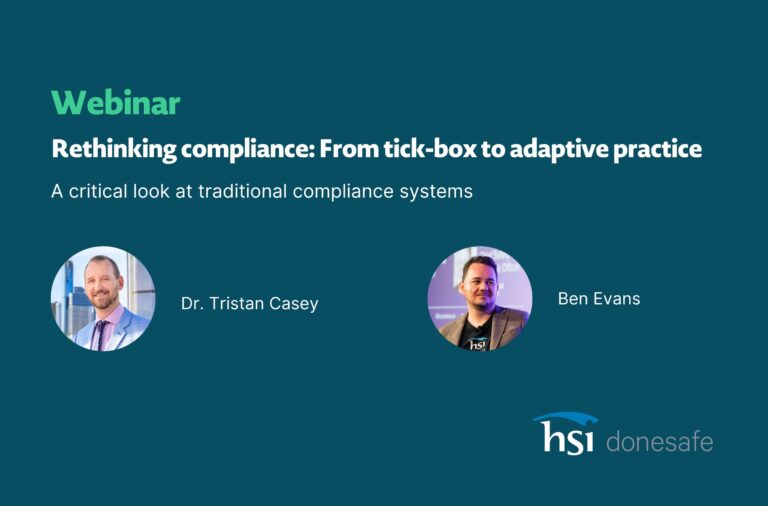
Investing in safety programs is about protecting your people, reducing risk, and delivering tangible business value. Yet, many organizations struggle to calculate the return on investment (ROI) from their safety initiatives. Understanding how to measure ROI not only helps justify these investments to leadership but also ensures your safety strategy remains a priority.
Here’s a step-by-step guide to help you measure the ROI of your safety programs and communicate their value effectively.
Clearly Identify Direct Cost Savings
Start by calculating the direct financial impact of your safety initiatives. Consider cost reductions in:
- Injury-related expenses: Lower costs from fewer workplace injuries, including medical treatment, compensation claims, and lost productivity.
- Insurance premiums: Reduced incident rates often lead to lower workers’ compensation premiums.
- Legal and regulatory fines: Compliance with safety regulations minimizes the risk of fines or legal action.
For example, if your organization has reduced workplace injuries by 20% over a year, calculate the associated savings in compensation claims and downtime.
Maximize Your Time Savings
Safety programs that streamline processes and reduce administrative burdens can free up valuable time for your team. Consider:
- Fewer hours spent on manual reporting: Automating incident reporting and compliance checks reduces time-consuming admin work.
- Improved reporting accuracy: Fewer errors mean less time spent correcting mistakes and more reliable data for decision-making.
Estimate the total time saved and translate it into a monetary value by calculating the average hourly wage of your safety team.
Consider the Impact of Indirect Benefits
Indirect benefits can be harder to measure but are equally important. These include:
- Employee engagement: A strong safety culture improves morale, leading to higher engagement and retention rates.
- Reputation enhancement: Organizations with a robust safety record are more attractive to clients, partners, and prospective employees.
- Competitive advantage: Meeting safety standards can help win bids and contracts, particularly in industries where compliance is critical.
Consider using case studies from your own organization or industry benchmarks to estimate the financial impact of these indirect benefits.
Calculate Your ROI
Understanding the ROI of your safety initiatives is key to making informed decisions and securing leadership buy-in. Use our ROI calculator below to estimate the financial impact of reducing incidents, improving efficiency, and streamlining compliance. Simply input your data to see how much your organization could save with a smarter approach to safety.
Once you’ve gathered your data, apply a simple ROI formula to calculate your return:
ROI = (Net Benefit / Cost of Investment) x 100
For example:
- Net Benefit: $100,000 saved in injury-related expenses, time savings, and indirect benefits
- Cost of Investment: $25,000 spent on safety software and training
ROI = ($100,000 / $25,000) x 100 = 400%
This means your organization achieved a 400% return on its safety investment.
Calculate your ROI here:
ROI Calculator
Make Your ROI Case Clear and Compelling
Present your findings in a way that resonates with leadership. Tailor your pitch to highlight key areas like profitability, efficiency, and competitiveness.
- Financial Impact
Show how safety initiatives save money, not just through reduced incidents, but by cutting costs like insurance premiums and worker’s compensation claims. - Time Savings & Efficiency
Demonstrate how safety improvements reduce administrative work and streamline processes. Use clear examples, like automating reports or speeding up training, to showcase time savings. - Competitive Advantages
Link safety improvements to better reputation, talent retention, and customer trust. Highlight how these factors help the company stay competitive in the market.
By focusing on these key outcomes and using clear, relatable examples, you’ll make a stronger case that resonates with leadership. To dive deeper into strategies for securing executive buy-in and turning your safety initiatives into real change, click here to read the full blog.
Are you getting the full value from your safety investments?
Measuring ROI from safety programs isn’t just about proving value—it’s about continuously improving your safety strategy to deliver better outcomes for your people and your business. By understanding the financial and operational benefits of your safety initiatives, you can ensure they remain a priority at all levels of your organization. Explore the full impact of investing in effective EHS software and the various ways it drives ROI.
Want to see the real impact of a smarter safety system? Donesafe makes it easier to cut costs, save time, and keep your people safe, all while helping you prove the value of your safety efforts. Let’s chat about how you can start seeing better results.
Share:



